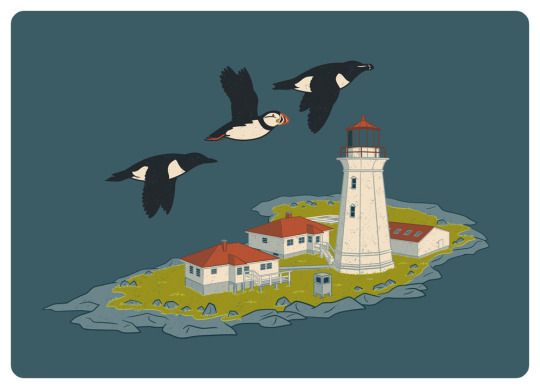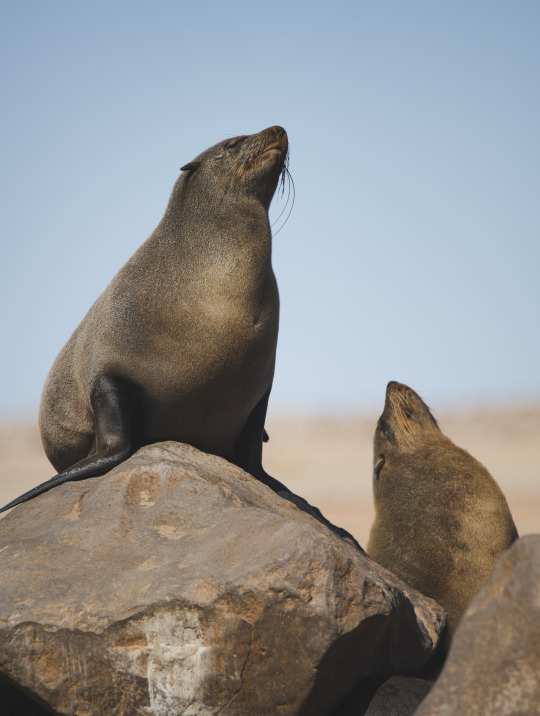#seal colony
Explore tagged Tumblr posts
Text

#SEALS#CAPE FUR SEALS#SUNBATHING#CAPE CROSS#NAMIBIA#NAMIBIAN#NAMIBIAN COAST#COAST#CAPE CROSS NAMIBIA#AFRICA#AFRICAN COAST#WILDLIFE#SEAL COLONY#BOKEH#SKELETON COAST#SKELETON COAST NAMIBIA#SKELETON COAST AFRICA#NATURE#OCEAN#WILDLIFE PHOTOGRAPHY#SILHOUETTES#TRAVEL PHOTOGRAPHY#ANIMAL#ANIMALS OF AFRICA#ANIMAL PHOTOGRAPHY#NATURAL WORLD#OUTDOOR PHOTOGRAPHY#WILD#SEAL#TRAVELS
9 notes
·
View notes
Text

2023_12_20
1 note
·
View note
Text
Rabid Seals
We didn’t know this could happen, we are worried about other marine animals. And not to be a sensationalist but someone call up Stephen King and ask him how he feels about the possibility of a rabid orca.
#rabies#rabid animals#marine mammals#pinnipeds#cape fur seals#seal colony#elephant seals#mustelidae#cape clawed otter#delphinidae#dolphins#porpoises#common dolphin#bottlenose dolphin#orca#south africa#southern africa#i was only half kidding about the orcas#we get transient orcas#they come to hunt the great white sharks#they are mammals#mammals can contract rabies#but we don’t know whether that extends to delphinidae#we didn’t even know pinnipeds could pick it up!#there was only one isolated incident in the world before this
1 note
·
View note
Text





we interrupt our regularly scheduled programming to bring you zoomed-in seals from Ytri Tunga Beach.
Can you spot both seals in the first pic?
0 notes
Text

Machias Seal Island Light, disputed water between the Gulf of Maine and the Bay of Fundy, Maine/New Brunswick. The lighthouse on Machias Seal Island is staffed by the Canadian Coast Guard. The island and its surrounding waters were declared a bird sanctuary in 1944. Its home to largest colony of puffins on the Atlantic Coast (south of the Gulf of St. Lawrence). During nesting season researchers reside on the island, keeping watch over the thousands of puffins, razorbills, murrs and other sea birds laying eggs and raising chicks. Machias Seal also attracts a lot of bird voyeurs from both sides of the bay, for that reason there also a resident warden on the island.
#Machias Seal Island Light#Machias Seal Island#Machias Seal#lighthouse#Machias Seal Island Lighthouse#maine#new brunswick#Bay of Fundy#Gulf of Maine#birds#sea birds#nesting colony#puffin#atpu#atlantic puff#razorbill#murr#common murr#pelagic#island#disputed waters#canada#nesting#colony#art#illustration#poster#print#tee#jada fitch
83 notes
·
View notes
Text













The first European to discover Monterey Bay was Juan Rodríguez Cabrillo on November 16, 1542 while sailing northward along the coast on a Spanish naval expedition. He named the bay Bahía de los Pinos, probably because of the forest of pine trees first encountered while rounding the peninsula at the southern end of the bay.
#Monterey Bay#discovered#Juan Rodríguez Cabrillo#16 November 1542#white colonialism#anniversary#US history#original photography#travel#vacation#summer 2017#Monterey#Pacific Ocean#West Coast#landmark#California#architecture#cityscape#seascape#Harbor Seal#wildlife#animal#ship#USA#tourist attraction
3 notes
·
View notes
Text

Coat of arms of French Equatorial Africa "French Equatorial Africa (French: Afrique équatoriale française, or AEF) was a federation of French colonial territories in Equatorial Africa which consisted of Gabon, French Congo, Ubangi-Shari, and Chad. It existed from 1910 to 1958 and its administration was based in Brazzaville." (Wikipedia)
#coat of arms#French Equatorial Africa#colonialism#seal design#France#Gabon#French Congo#Congo#Ubangi-Shari#Chad#French colonies#colony#Africa#history#colonial history
5 notes
·
View notes
Photo

Official Seal of the Massachusetts Bay Colony
In 1629, King Charles I granted a charter to the Massachusetts Bay Colony, which included the authority to use a seal. It featured an Indian holding an arrow pointed down in a gesture of peace, with the words "Come over and help us," emphasizing the missionary and commercial intentions of the original colonists.
#historical colony#new england colonies#Massachusetts Bay Colony#official seals#boston old state house#visit boston#travel america#travel photography#muttball
3 notes
·
View notes
Text

#seals#cape fur seals#sunbathing#cape cross#namibia#namibian#namibian coast#coast#cape cross namibia#africa#african coast#wildlife#seal colony#skeleton coast#skeleton coast namibia#skeleton coast africa#nature#ocean#wildlife photography#travel photography#animal#animals of africa#animal photography#natural world#outdoor photography#wild#seal#travels#travel blog
11 notes
·
View notes
Text
found out that one of our old collective names was the Solar System. huh
#original posts#so it was Wolf System. then Solar System. then Sundown System. then Seal Colony. then Leptonyx Constellate. and now Canis Constellate#Solar and Sundown we did not fully remember (although we recalled Sundown a little more than Solar)#we didn't realize we had Solar System as a name until we looked through an old personal server of ours...#the amnesia is amnesia-ing
1 note
·
View note
Text
Ants on my pillow I'm killing every landlord and then myself
#for legal reasons this is a joke#theres at least 1 ant colony living inmy exterior wall and ive been told by multiple pest control companies that theres nothing i can do#i think im gonna buy diatomaceous earth and use it to seal the goddamn wall in#my post
0 notes
Text

All the dragons from the HTTYD stream. Detailed images below.
The designs from the original movie are basically perfect, which is why I didn't really dare to touch them... until a certain trailer dropped recently.
I'm a spiteful creature.
Anyway. Some ground rules. I tried to make these creatures overall a little bit more realistic and grounded without robbing them of the inherent whimsy that the originals had. All of them are tetrapods, so only 4 limbs max.

Nightfury
These guys have no more functional limbs to move on the ground. They are living stealth bombers. Silent fast fliers.
On the ground they flop around similar to seals, forming small colonies on top of tall cliffs.

Red Death
At a certain size it becomes unfeasible to fly for even a dragon. The Red Death stays on the ground using it's heavy armor and enormous size when raiding other dragon nesting colonies. it'as wings are more like spurs, to injure rivals in combat.

Gronkle
The original had a hummingbird style in flying , something that doesn't work for an animal of this size. My compromise is to make the wings rather stout and being able to be folded a lot.

Nadder
Easiest design, take a unfeathered theropod and combine it with a bearded dragon.

Shellfire
This was the last one I made on stream, it is one of the (in my eyes) worst designs from the shows, so a nice challenge to make it work a little better.
This guy is now a filter feeder, using its large horns to funnel water into its mouth.

Zippleback
Multi-headed dragons are really tricky. In my design I made one of the heads a parasitic male, similar to angler fish, that hitches a ride on the back of the larger female.

Monstrous Nightmare
One of the most classic dragons from the original movie. Lots of crocodilian influence here. The osteoderms on its back have pores from which it produces flammable secretions.

Razorwhip
A fast an agile dragon, but the original doesn't really show that in the head shape and all these spines don't help. I put some tapejarid influence into it.

Rumblehorn
The massive neck of this dragon doesn't work well in terms of aerodynamics, unless it's an inflatable display structure ;)

Whispering Death
The giant maw of this dragon is an even greater challenge, but when you give it the gular pouch of a pelican eel and turn these eyes into eye-spots, it works quite well.

And of course the Terrible Terror!
As you can see it's in my case a close relative of the nadder.
6K notes
·
View notes
Text
I'm not saying this because I'm only framing it as a billionaire's foolishness I'm saying it because there has never been any serious possibility and probably never will be. it's neither technically possible nor materially desirable which is what every actual serious space exploration professional and specialist in adjacent fields will also tell you. laypeople have absolutely no conception of how difficult it is to get someone into orbit, much less to the moon, much less to mars. the Mars trip is so brutally long and difficult it's essentially impossible that anyone but precision-trained astronauts could survive it in any position to be a tourist once they got there. we do not have cryosleep pods or domed atmosphere colony technology or any of the other things science fiction movies handwave away. it is not only a stupid billionaire talking point only believed in by morons and used by the slightly less stupid to dazzle the public with false promises, it is also just not worth doing, period, and no human space agency that exists currently or will potentially exist in the next century will be capable of doing it without Star Trek-level technological deus ex machina-style sudden and complete technological horizon changes. In other words if space aliens arrived tomorrow with a hyperdrive that defied all current human understanding of physics, then a Mars colony type scenario could possibly be on the table at some point in the lifetime of anyone reading this (or at all). anything short of that exact scenario occurring means you can continue to ignore Mars colonization discourse as equivalent to someone telling you the CIA Stargate projects actually went really well (they didn't) and we can all start astral projecting to work next year. it's just entirely bullshit. just wanted to get that out there for everyone on the site who isn't a big space nerd
there isn't going to be any mars colonization you stupid slut
#sending astronauts to mars eventually will probably happen because there is a lot to do there from a scientific perspective#as a colony planet it would take so much currently imppssible technology to make workable you can just forget it#not happening#mars does not have enough gravity to hold down a breathable atmosphere even if we tried to create one#so amongst a billion other reasons unless we built sietch tunnels or sealed dome tunnels to live in its a no#you cant change the mass of a planet that way. we cant do it. never will#a one way trip to mars takes nine months. the trip back takes three years
718 notes
·
View notes
Text
Came back to more ants on windowsill xP
#Af this point there’s prolly just an anthill/colony#outside/uncerneath#too bad we can’t cement/seal over my window permanently bc I never open it anyways#personalice
0 notes
Text
been seeing homies get deep into "the terror" and making me want to rewatch SO i spent two hours in the dead of night reading the wiki/the subreddit/other linked articles and like. one of those articles was deadass fucked up
there was a woman who spoke inuktitut who was writing a book containing a lot of inuit oral histories, and in nunavut she was able to hear passed-down recollections of when survivors from the franklin expedition were passing through
and like. i can't imagine being an inuit family/group, knowing that europeans exist but having never seen them, seeing 8-9 shambling, blue-skinned, cold-to-the-touch out-of-their-minds white men come wandering by. they invited the men inside their igloos for warmth, for food, to be hospitable. the men refused to eat, refused to speak, and when trade was offered, clutched their possessions close and refused to entertain the idea of trade. this was, offputting, to say the least. the group set them up in their own igloo, with their own fire, and left three whole seals for them to eat. and then they fled cause what the FUCK get out of there. they came back in a few days to check on the strangers. the three seals were completely untouched, while all of the men had killed and eaten each other
i mean. fuck dude. there are obviously pretty dark angles to view the franklin expedition from– honestly can't think of a good angle, it's pure colonialism and british exceptionalism– but that specific interaction, that inuit group who were living lives as normal until a dozen fucking walking dead showed up and did cannibalism. no wonder that story got passed down, i'd be shitting my pants if i saw that
#I will try to find a link to the article again tomorrow but I'm on 4 hours of sleep rn#On account of spending 2 hours reading about The Terror on a work night#So the fact checking will have to wait. But holy fuck dude#The Terror
19K notes
·
View notes
Text
couldn't sleep last night because I was too busy wondering what a domesticated breed of fur seal would look like
#the most straightforward use for them would be like hunting dogs so they help catch fish#but like. what if they were kept for their fur#what if they were kept for their MILK#idk there's something fascinating to me about keeping predators for their biproducts#I imagine they'd be fairly easy animals to care for too#like they form their own colonies and only leave to feed#seal shepards (separds) would probably only need to chase off ground predators and help lost pups find their mothers#and what about PETS#would their be companion and toy breeds??#so much to think about
0 notes